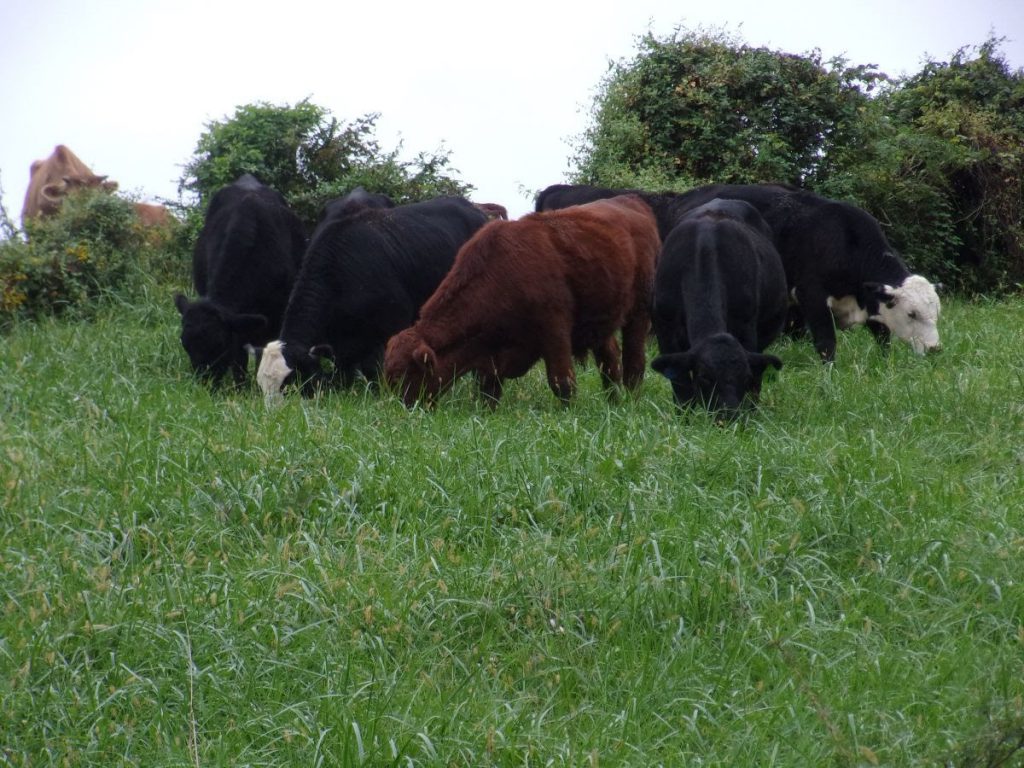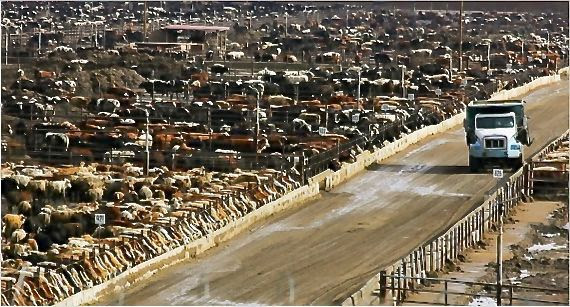Chicken Poop with your Beef, Anyone?

I should probably title this blurb “Why not Feedlot Beef” instead, because to truly understand the benefits of grassfed beef we need to delve into the disadvantages of feedlot—which is to say “supermarket”—beef. Although there are a number of reasons grass-fed beef is healthier for the human body—and the land it’s raised on, I prefer to begin with animal health. Grassfed, grass-finished beef is raised on pasture—grassland—from birth to slaughter. Due to living in its natural habitat, the animal is inherently healthy without crutches (i.e. antibiotics, synthetic hormones, corn, etc.). As always, humans health id dependent on the health or nutrient content of the food we eat. So it stands to reason—all science and research aside—that grassfed beef will serve the needs of our bodies far better than “artificial” feedlot beef.
So then, why is feedlot beef unhealthy? Although feedlots vary in size from only a few dozen head on a small farm to tens of thousands of animals on many acres in an industrial-sized feedlot. Most feedlots, as we think of them, are facilities designed for the sole purpose of fattening cattle—quickly, and have the ability to contain 30,000 to 50,000 animals. I know, the numbers are astounding, but that in itself doesn’t make for beef unfit for eating, although I’m sure stock density and the associated stress plays a part.

What do cattle eat in a feedlot? Corn, yes, but that’s not all. Each animal will consume about thirty two pounds of feed ration a day, which is roughly three quarters corn—nearly half a bushel corn a day. The other quarter of the ration is made up of corn silage (the whole corn stalk chopped and fermented in a silo), alfalfa hay (roughage to slow the rumen; yes, farmer lingo), liquid vitamins, synthetic estrogen (growth hormone), Rumensin an Tylosin (sub-therapeutic antibiotics), liquefied fat (either beef tallow, pork fat;a “recycled” by-product of the meat processing industry), and protein; a mixture of feather meal and chicken litter (yes, poop) from the chicken industry, as well as fish, chicken, or pork meal (dehydrated animal or fish waste coming processing plants). While this isn’t a complete list, and isn’t listed in the correct ingredient order, I feel like it’s complete enough to provide an understanding of what feedlot beef eats. Many folks question antibiotics. The only reason antibiotics are used is to allow feedlots to push maximum daily gain to the hilt. While I don’t doubt the possibility of producing beef in feedlots without antibiotics, to do so at the current rate of calories per day would certainly invite sickness to a greater degree. The way I see it, producing beef in feedlots hinges on two things, cheap feed and maximum daily gain, both of which are supported by USDA policy. Cheap corn is made possible only through the USDA farm subsidy program, which subsidizes farmers x amount per bushel of corn harvested. And the USDA’s beef grading system is designed to reward marbling (also known as intramuscular fat, marbling is just a pleasanter term), which in turn creates a need for corn.
Much more could be said about status quo beef production, everything from humane cattle handling, to soil regeneration (or the lack thereof), to scientific comparisons between grass and grain-fed, to national policy. But this blurb is long enough and we have plenty to chew on with what has been said. In my opinion, the difference is just too great, the risk too substantial, and the science and research too plentiful; for me to choose a product that will potentially to harm my children. Besides, it’s just disgusting. “I’ll have the beef, thanks, but will pass on the chicken poop.” And that’s the View from the Country.
